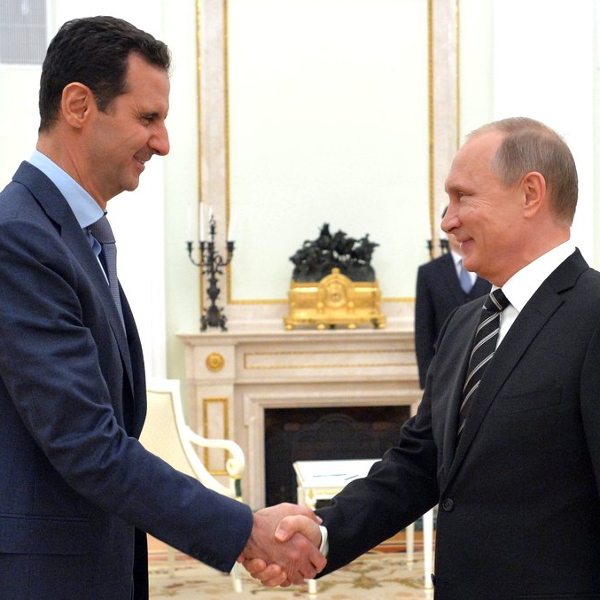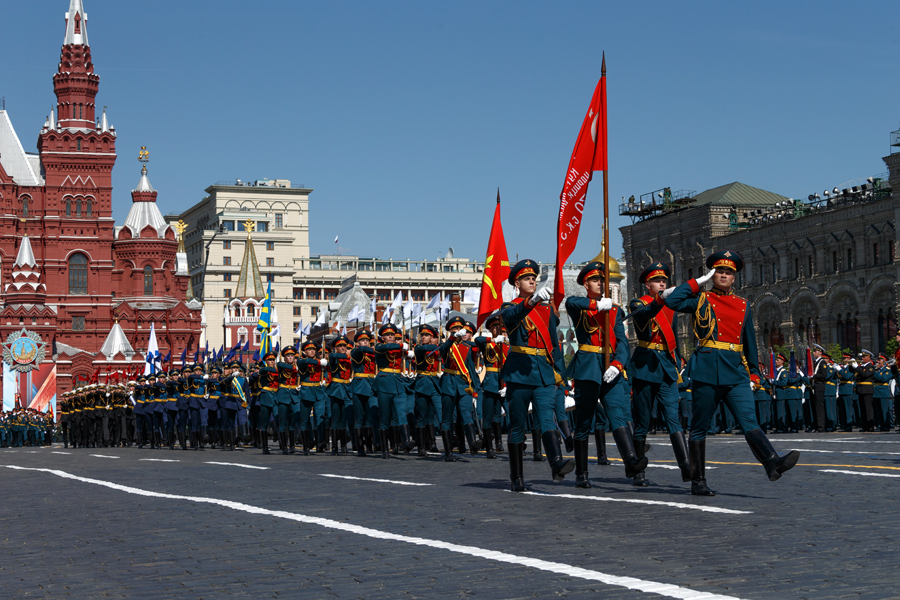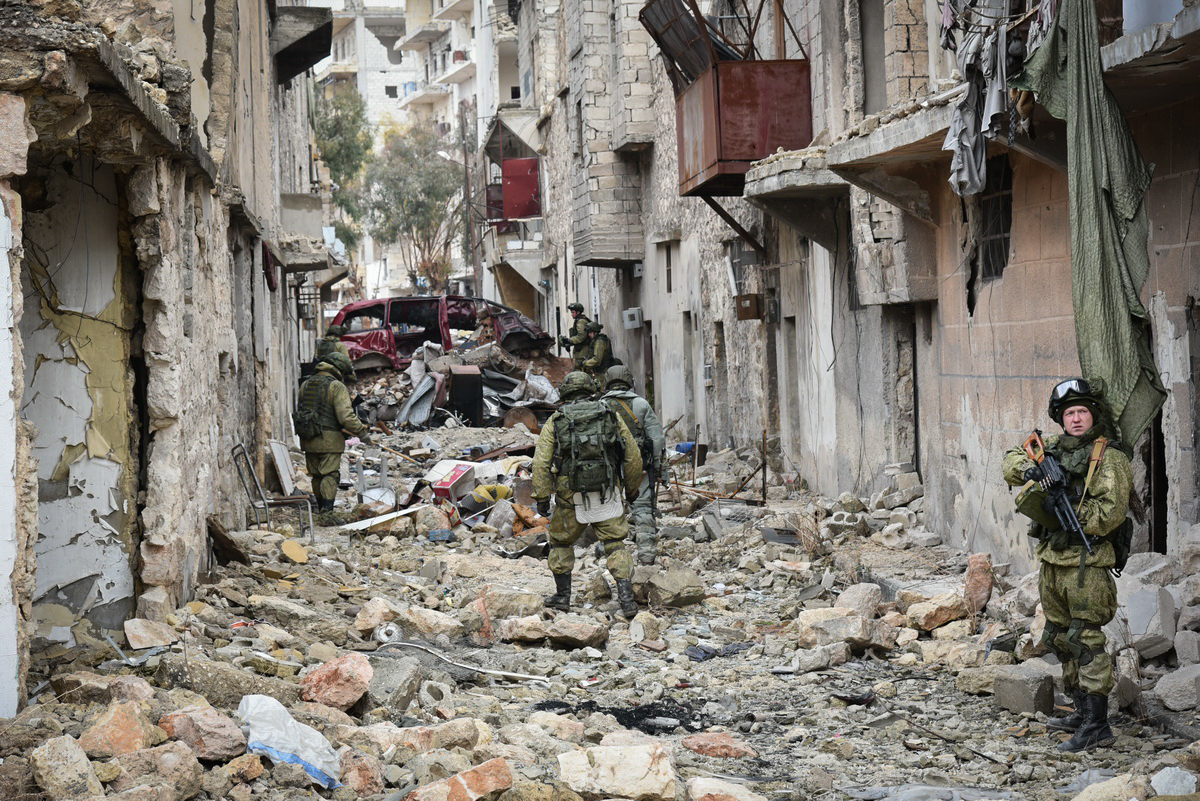
Politics & Society
How Putin’s bombers are raising the stakes

As G7 ministers meet to discuss Russia’s role in Syria, its historical emphasis on statehood offers an insight into why Putin still supports Bashar Al-Assad
Published 11 April 2017
President Donald Trump’s decision to launch 59 Tomahawk missiles to punish the Syrian regime for its chemical weapon attack drew immediate condemnation from the Russian government.
As the Syrian regime continues to flout international norms, why would Russia risk further international isolation by offering its ongoing support?
Many have suggested the answer lies in a cynical version of realpolitik. They argue that Russia continues to support the Syrian regime in order to protect its own strategic interests and, in particular, to fight terrorism while also becoming an important power broker in the Middle East. These considerations no doubt play an important role.

But another critical motivation – which becomes clear from Russian constitutional history – has largely been ignored.
For the Russians, protecting President Assad and the Syrian regime is about protecting the integrity of Syria’s “statehood”, known in Russia as gosudarstvennost. Russian President Vladimir Putin has placed this concept at the centre of his own public statements about Syria. When discussing the role of Russian troops in Syria in April 2016, he stated their chief goal was to protect Syria’s statehood. And later that year when discussing Russia’s troop presence, he said they had successfully protected gosudarstvennost in Syria.

Politics & Society
How Putin’s bombers are raising the stakes
Appeals to the importance statehood have a deep resonance in Russian history.
In fact, the most influential school of Russian historiography rejects the Western view that history is a progression towards limited government that allows space for individual liberty. Instead, this “statist school of historiography” views Russian history as a steady progression from anarchical tribalism to a strong state, or krepkoe gosudarstvo, that will organically unite the people and the government while protecting economic and political rights.
During the late imperial Russian period, a group of influential constitutional thinkers drew on this to argue that an enlightened Tsar with strong powers was the only way to develop this Russian state. This approach attempted to chart a middle path between appeals for Western-style limited constitutional government on one hand and socialist revolution on the other.
Both paths, these thinkers argued, would undermine the true progressive goal of Russian history: the development of the Russian state. This approach was best summed up in the words of one of Vladimir Putin’s favourite imperial Russian statesman, Petr Stolypin: “We do not need great upheavals. We need a great Russia.”
Since the collapse of the Soviet Union, Russian leadership has sought to find this middle path and rebuild the power of the Russian state. In 1993, then-President Boris Yeltsin argued that Russia’s first post-communist constitution must protect “the unity of the Russian state” in order to overcome “the weakness of government power”.

To do this, Yeltsin argued that the new constitution should “depart from copying the American, French or other models” and instead return to “Russian roots”. This viewpoint is reflected in Russia’s current constitution which frequently cites the importance of preserving its statehood.
Later in 2000, soon-to-be President Vladimir Putin’s pre-election manifesto vowed to put this constitution into effect, explaining that a strong state was not an “anomaly, or something that should be struggled against” in Russia. Instead, he argued that a strong state is “a source and guarantor of order, and the initiator and main driving force of any change.”
This belief in the strong state remains in Russia to this day.
Many Russian political elites view the Syrian conflict through this statist worldview. They see any kind of western-led regime change as likely to lead to the destruction of Syria’s statehood. This viewpoint is backed up, they argue, by Western interventions in both Libya and Iraq, which ultimately destroyed the state in those countries.
These lessons, they argue, show that any solution to the crisis must be very careful to preserve and potentially strengthen Syria’s “statehood.” This can be seen clearly in the draft constitution the Russians put forward to solve the Syrian crisis, which went to great lengths to ensure institutions like the Syrian presidency would have vast powers to maintain the unity and integrity of Syrian statehood.
This has several implications.
First, it suggests that Russia’s attachment to the Syrian regime is more than just strategic; this support also has an ideological component. This means Russia will likely continue to do everything it can—including using its veto on the Security Council—to block any Western plan for removing President Bashar Al-Assad from power by force.
Second, and more importantly, an understanding of this worldview suggests a possible strategy for Western diplomats in negotiating with the Russians on Syria. If they can acknowledge the Russians have a legitimate concern in preserving state power in Syria and working to avoid a descent into anarchy, they are more likely to build trust.
This acknowledgement of course does not solve a number of complicated questions.

Perhaps the most important is whether opposition groups (and their patrons in Turkey and Saudi Arabia) will ever accept the continuance of, or at least some version of, the current Syrian state into the future.
But if Western negotiators can acknowledge the importance of avoiding chaos and preserving some semblance of state power in Syria, they are more likely to find ways to convince the Russians to help remove Assad, and this could represent an important step forward in an otherwise stalled set of negotiations.
Banner image: Getty Images